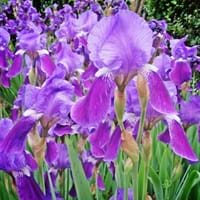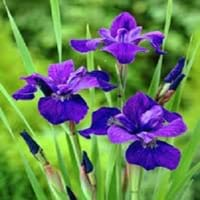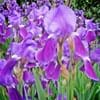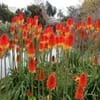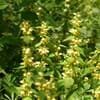Life Span
Perennial
Perennial
Origin
Europe
Eastern Europe, Russia, Siberia
Types
Not Available
Not Available
Number of Varieties
Not Available
Habitat
dry rocky watercourses
Grassland, Pastures, Swamps
USDA Hardiness Zone
3-9
3-8
Sunset Zone
1a, 1b, 2a, 2b, 3a, 3b, 4, 5, 6, 7, 8, 9, 10, 14, 15, 16, 17, 18, 19, 20, 21, 22, 23
A2, A3, 1a, 1b, 2a, 2b, 3a, 3b, 4, 5, 6, 7, 8, 9, 10, 14, 15, 16, 17, 18, 19, 20, 21, 22, 23
Habit
Upright/Erect
Clump-Forming
Flower Color
Blue Violet, Lavender, Purple, White
Blue Violet
Flower Color Modifier
Bicolor
Bicolor
Fruit Color
Green, Brown
Not Available
Leaf Color in Spring
Green, Sea Green
Green
Leaf Color in Summer
Green, Sea Green
Green
Leaf Color in Fall
Green, Sea Green
Green
Leaf Color in Winter
Light Green
Light Green
Leaf Shape
Lanceolate to elliptical
Long Narrow
Plant Season
Spring, Summer
Summer
Sunlight
Full Sun, Partial Sun
Full Sun, Partial Sun, Partial shade
Type of Soil
Clay, Loam, Sand
Clay, Loam, Sand
The pH of Soil
Acidic, Neutral, Alkaline
Acidic, Neutral, Alkaline
Soil Drainage
Well drained
Average
Bloom Time
Spring, Late Spring, Early Summer
Early Summer, Summer
Tolerances
Drought
Drought
Where to Plant?
Container, Ground
Ground
How to Plant?
Rhizome division
Seedlings
Plant Maintenance
Medium
Medium
Watering Requirements
Average Water Needs
Keep the ground moist but not water-logged, Requires regular watering, Requires watering in the growing season
In Summer
Lots of watering
Lots of watering
In Spring
Moderate
Moderate
In Winter
Average Water
Average Water
Soil pH
Acidic, Neutral, Alkaline
Acidic, Neutral, Alkaline
Soil Type
Clay, Loam, Sand
Clay, Loam, Sand
Soil Drainage Capacity
Well drained
Average
Sun Exposure
Full Sun, Partial Sun
Full Sun, Partial Sun, Partial shade
Pruning
Remove damaged leaves, Remove dead branches, Remove dead leaves
Remove damaged leaves, Remove dead leaves
Fertilizers
All-Purpose Liquid Fertilizer
All-Purpose Liquid Fertilizer
Pests and Diseases
Aphids, Bacterial leaf spot, Billbugs, Borers, Fungal leaf spots
Red blotch
Plant Tolerance
Drought
Drought
Flower Petal Number
Single
Single
Foliage Texture
Coarse
Medium
Foliage Sheen
Matte
Matte
Attracts
Butterflies
Butterflies
Allergy
Gastric disturbances, Skin irritation
Not Available
Aesthetic Uses
Showy Purposes
Beautification, Bouquets, Landscape Designing, Showy Purposes
Beauty Benefits
Not Available
Not Available
Environmental Uses
Air purification
Air purification
Medicinal Uses
Juice of fresh root used for treatment of dropsy
Not Available
Part of Plant Used
Root
Flowers, Leaves
Other Uses
Making Perfumes, Used as a flavouring in food
Decoration Purposes, Showy Purposes, Used as Ornamental plant
Used As Indoor Plant
No
Yes
Used As Outdoor Plant
Yes
Yes
Garden Design
Cutflower, Feature Plant, Mixed Border
Cutflower, Feature Plant, Foundation, Mixed Border
Botanical Name
Iris germanica
IRIS sibirica 'Caesar's Brother'
Common Name
German Iris
Siberian Iris
In Hindi
German Iris
Caesar's Brother Siberian Iris
In German
German Iris
Caesars Bruder Sibirische Iris
In French
German Iris
Frère Iris de Sibérie de César
In Spanish
German Iris
De César Hermano Siberian Iris
In Greek
German Iris
Καίσαρα Αδελφός Σιβηρίας Iris
In Portuguese
German Iris
Irmão de César Siberian Iris
In Polish
German Iris
Cezara Brat syberyjski Iris
In Latin
German Iris
Caesaris Frater Siberian Iris
Phylum
Magnoliophyta
Not Available
Class
Liliopsida
Liliopsida
Order
Asparagales
Asparagales
Family
Iridaceae
Iridaceae
Clade
Angiosperms, Monocots
Angiosperms, Monocots
Tribe
Irideae
Not Available
Subfamily
Iridoideae
Iridoideae
Number of Species
Not Available
Season and Care of German Iris and Caesar Siberian Iris
Season and care of German Iris and Caesar Siberian Iris is important to know. While considering everything about German Iris and Caesar Siberian Iris Care, growing season is an essential factor. German Iris season is Spring and Summer and Caesar Siberian Iris season is Spring and Summer. The type of soil for German Iris is Clay, Loam, Sand and for Caesar Siberian Iris is Clay, Loam, Sand while the PH of soil for German Iris is Acidic, Neutral, Alkaline and for Caesar Siberian Iris is Acidic, Neutral, Alkaline.
German Iris and Caesar Siberian Iris Physical Information
German Iris and Caesar Siberian Iris physical information is very important for comparison. German Iris height is 71.10 cm and width 45.70 cm whereas Caesar Siberian Iris height is 90.00 cm and width 60.00 cm. The color specification of German Iris and Caesar Siberian Iris are as follows:
German Iris flower color: Blue Violet, Lavender, Purple and White
German Iris leaf color: Green and Sea Green
Caesar Siberian Iris flower color: Blue Violet
- Caesar Siberian Iris leaf color: Green
Care of German Iris and Caesar Siberian Iris
Care of German Iris and Caesar Siberian Iris include pruning, fertilizers, watering etc. German Iris pruning is done Remove damaged leaves, Remove dead branches and Remove dead leaves and Caesar Siberian Iris pruning is done Remove damaged leaves and Remove dead leaves. In summer German Iris needs Lots of watering and in winter, it needs Average Water. Whereas, in summer Caesar Siberian Iris needs Lots of watering and in winter, it needs Average Water.
